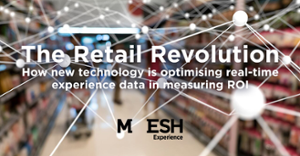If Content is King, Context is certainly Queen and we have been increasingly looking at the context of advertising as well as the content. For an advertiser, avoiding unsavoury content is clearly important, and this has been much discussed over the last year. But think of the other side of the coin, finding the right context for communications can really boost their impact.
What kind of contexts should we take into consideration? For Heineken it was particularly the context within the Path to Purchase.
- How about the context of planning to shop? Which touchpoints are most relevant then?
- Are there particular times of day that don’t just reach people but have more impact?
- Do certain creative campaigns work better in certain contexts?
- How can you leverage partnership advertising?
- How should brands be responding to news, particularly negative news about their brand?
To evaluate context, we have captured people’s experiences in real-time in the real world. Participants report every brand encounter and let us know the brand, the touchpoint and how positive and persuasive they found the experience. We call the approach Real-Time Experience Tracking (RET).
Download the full Retail Revolution presentation for FREE to learn more about how new technology is optimising real-time experience data in measuring ROI.
So how can this data help us to understand context understand the path to purchase?
Let’s take two contexts, planning and on premise.
In the Pre Shop phase, serving ideas and messages about taste and flavors, like Johnny Appleseed’s Spiced Appleseed Pancakes, help shoppers to plan a trip. Serving ideas inspire shoppers and linking these to taste enhancement is particularly effective to influence pre store planning. Online also prompts Pre Store Planning, particularly YouTube. Whilst online tools are important we shouldn’t forget the old favourites! Mailings and circulars do a great job and came top in importance in planning a trip. So we would urge shopper marketers to re-think circulars.
On premise we saw the importance of the menu. If someone had seen the drink on the menu, they were 1.75 times more likely to increase their consideration of the brand. It is particularly useful when the menu suggests how to pair the drink with food. Broad appeal across food types is a powerful menu message.
In fact, if you have an on premise experience you were 1.7 times as likely to purchase in store and if you have a store experience you were 1.3 times more likely to have an on premise experience. So we should not think of On and Off Premise as isolated events. We need to understand the relationship between the two.
Let’s now look at timing context in another way….
For this we have looked at studies across our entire database with over a million experience to pull out some generic truths. If we look at Experience Reach and Engagement for packaged goods we see that reach peaks at prime time, as might be expected, but engagement doesn’t follow suit. In fact TV ads early in the morning enhance people’s moods with cheery tone of voice. This is not the case for financial services, where people engage more after 6pm when they have finished work on the commute home.
There has been lots of information recently about needing to tailor content to screen size and the limited attention people give to ads seen on mobile phones. When looking at cinema touch points across categories, we invariably see that it is one of the most engaging and impactful media channels. However, cinema can really come into its own for campaigns that require more attention. For example, we have noticed polarizing views for the Nationwide poetry campaign in our subscription retail banking study. When viewed in the cinema we have seen very positive reactions but in the context of TV and people’s busy lives, some of the executions can demand too much to decode.
Many brands are not easily able to see the impact of working with a partner. LG Electronics understands that sometimes retailer ads featuring their brand can work as successfully as their own manufacturer ads.
We also need to be aware of how to react in negative contexts. In the UK there has been significant negative news about branch closures for banks. During the period when NatWest was closing branches, the brand also advertised its award-winning mobile banking app. This was received well because it gave a consumer benefit – it makes banking easier, putting customers in control – whilst also tacitly explaining why branches were closing.
- P2P context– Leverage digital and analogue on path to purchase. Remember the interrelationship of different contexts like on and off premise.
- Timing context– Understand and plan around the times when people will be most receptive to your category’s messages.
- Venue and screen context– Invest in relevant experiential contexts and tailor content to screen size.
- Partner context– Leverage relevant partners to increase reach and engagement. Don’t forget retail partners.
- News context– Consider paid advertising in relation to negative news and think about how paid, owned and earned touch points can best work together.
Sander Bosch, Global CMI Manager Digital Insights Global Commerce, Heineken
Fiona Blades, President and Chief Experience Officer, MESH Experience


